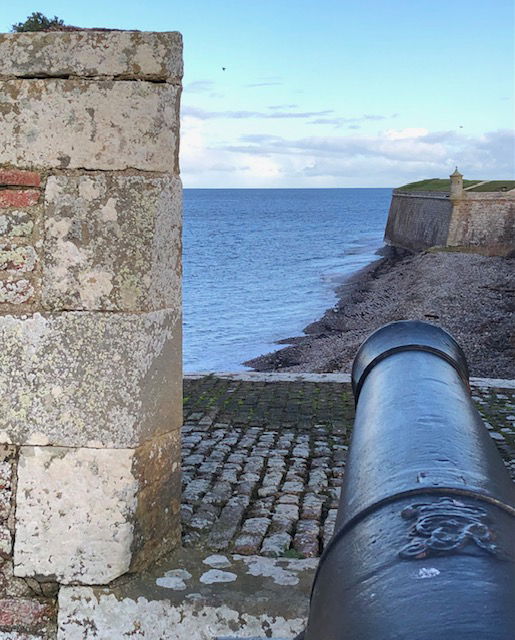Fort George, Scotland
Fort George was built to prevent another uprising of the Jacobites like what happened at Culloden Battlefield in 1746 (see previous post). Because of its strategic position, it has never been attacked. Located near Inverness, its large grounds, including one mile of walls, took a good part of an autumn day for Brian and me to explore .
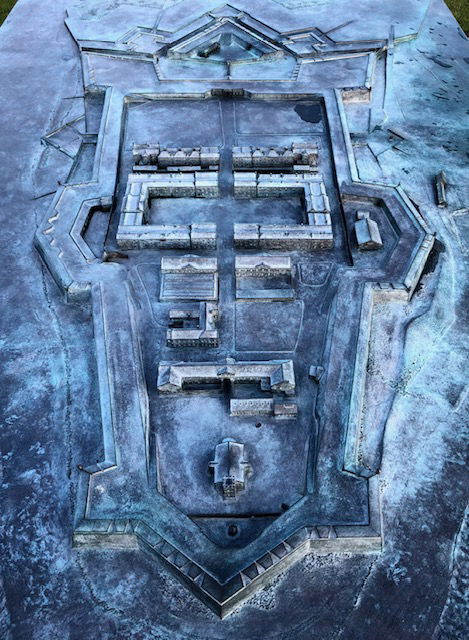
A metal cast model of the symmetrical Fort George, which was built on a peninsula that extends into Moray Firth. A firth is an inlet of the sea with an estuary. The panoramic views across the firth are lovely and give a sense of the remoteness of this place.
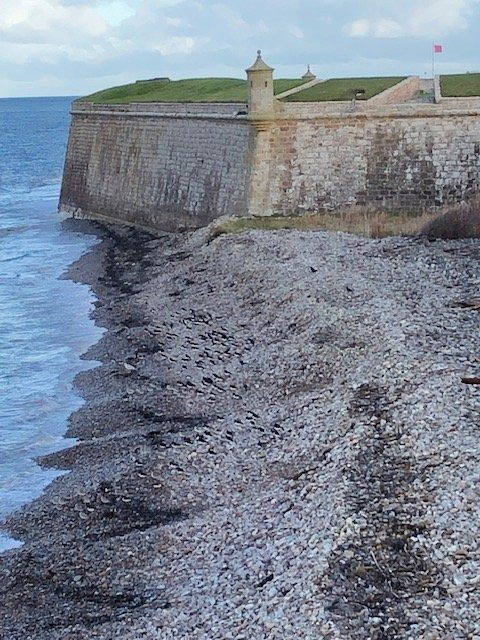
The small beach along the north side of the fort. Because they blend in so well, in the photo it's difficult to see the flock of oystercatchers on the beach. The beaches are not accessible, but the views are beautiful.
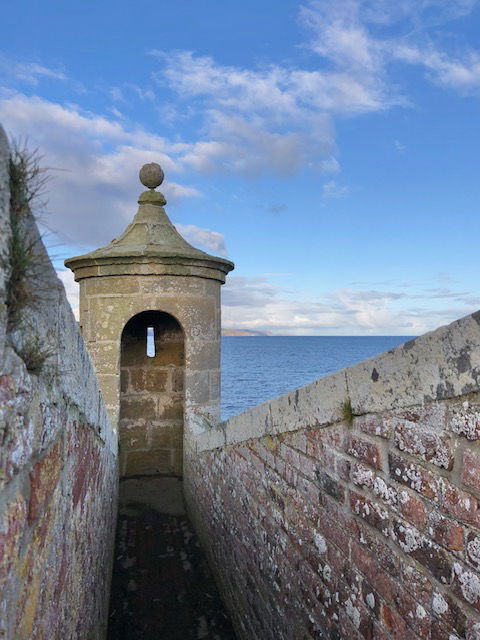
Sometimes bottlenose dolphins can be spotted in Moray Firth. The grass-topped ramparts provide dolphin-watching viewpoints. We did not see any, but apparently the best time is at the beginning of the rising tide.
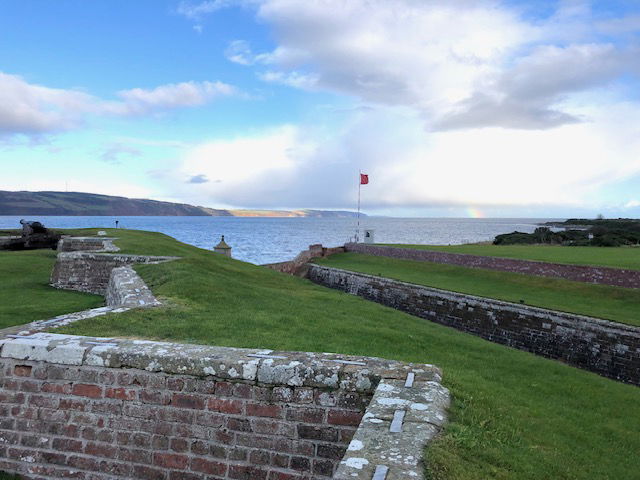
Fort George has been an active fort for 250 years. Today the barracks are still used by an infantry battalion of the British Army. We enjoyed viewing the historic barrack rooms, collection of weapons, and the Regimental Chapel. Lots of Scottish history here!
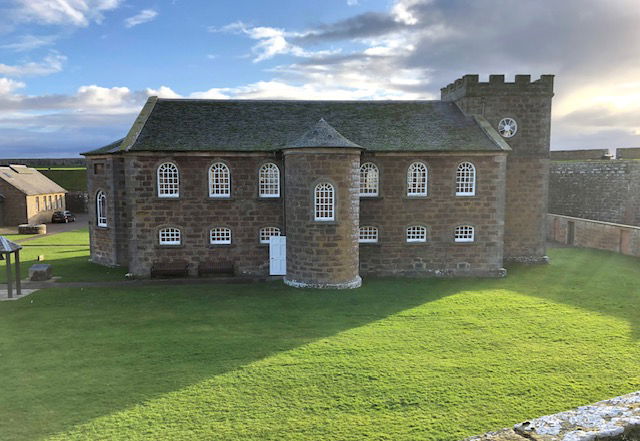
In spite of the breezy November cold, we tramped all over the grounds, taking a break for a lunch of hot soup in our campervan conveniently parked in the fort's parking lot. After lunch, we enjoyed the Highlanders' Museum, which is housed in the fort, and the lovely gift shop. An exhilarating and interesting day!
